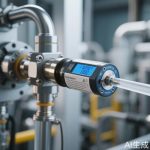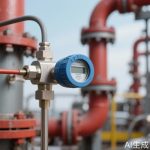In the world of industrial operations, compressed air is often referred to as the fourth utility, right after electricity, water, and gas. It powers machinery, controls processes, and is integral to countless applications. However, managing compressed air systems efficiently remains a challenge for many businesses. This is where compressed air flow sensors come into play, offering a transformative solution to monitor, optimize, and save on energy costs. These sensors are not just tools; they are gateways to smarter, more sustainable operations.
Compressed air flow sensors are designed to measure the rate of airflow within a system accurately. By providing real-time data on consumption, leaks, and inefficiencies, they empower plant managers and engineers to make informed decisions. Imagine being able to pinpoint exactly where air is being wasted or which equipment is underperforming. With this level of insight, companies can reduce energy usage, lower operational costs, and extend the lifespan of their compressed air systems.
One of the most significant advantages of using compressed air flow sensors is their ability to detect leaks early. It’s estimated that leaks can account for up to 30% of a system’s compressed air output, translating into substantial financial losses over time. Traditional methods of leak detection often involve manual inspections, which are time-consuming and prone to error. In contrast, flow sensors provide continuous monitoring, alerting operators the moment a deviation occurs. This proactive approach not only saves money but also minimizes downtime and enhances overall productivity.
Moreover, these sensors contribute to sustainability goals by promoting energy efficiency. In an era where environmental responsibility is paramount, reducing energy consumption is a key objective for many organizations. Compressed air systems are notoriously energy-intensive, often consuming more electricity than any other type of equipment in a plant. By integrating flow sensors, businesses can ensure that their systems operate at peak efficiency, thereby reducing their carbon footprint and aligning with green initiatives.
The technology behind compressed air flow sensors has evolved significantly, offering features such as digital outputs, easy integration with building management systems, and user-friendly interfaces. Modern sensors are designed to withstand harsh industrial environments, providing reliable performance even in the presence of contaminants, humidity, or extreme temperatures. This durability ensures that investments in flow sensing technology yield long-term benefits, making them a wise choice for any operation reliant on compressed air.
Implementing compressed air flow sensors is a straightforward process that can yield immediate returns. Many companies report seeing a return on investment within just a few months of installation. Whether you’re managing a small workshop or a large manufacturing facility, these sensors can be tailored to meet specific needs. From monitoring individual machines to overseeing entire networks, the scalability of flow sensing solutions makes them accessible and valuable across various industries.
In conclusion, compressed air flow sensors are indispensable tools for modern industrial operations. They provide the data needed to optimize performance, reduce waste, and achieve significant cost savings. As industries continue to prioritize efficiency and sustainability, adopting such technologies becomes not just an option but a necessity. Embrace the future of compressed air management with flow sensors and take the first step toward a more efficient, profitable, and environmentally friendly operation.




Leave a Message